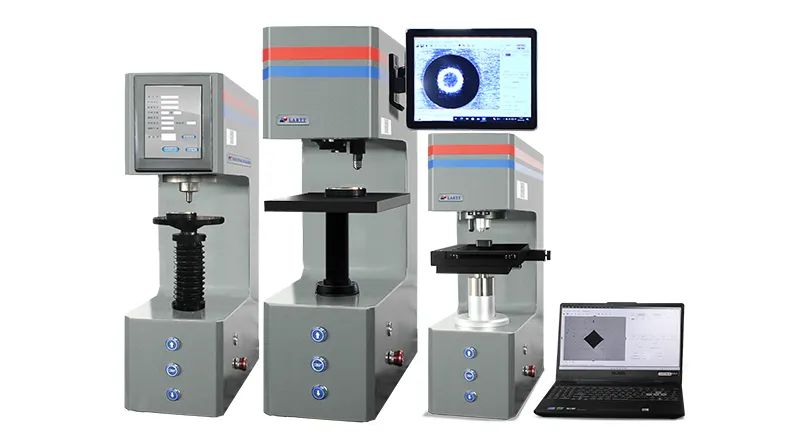LATEST NEWS
Press releases & Product news
What causes inaccurate hardness measurement?
2025-06-06

Hardness tester is not accurate? Maybe you made these mistakes!
In laboratory work and production testing, the hardness tester is one of our commonly used measurement tools. However, when many people use the hardness tester, they often get inaccurate measurement results due to some details. Today, let's talk about those easily overlooked wrong operations to help you avoid pitfalls and ensure the accuracy of the measurement results.

01 New machine is not calibrated, measurement is difficult to guarantee
After getting a new machine, many people are often eager to put it into use, ignoring the key step of calibration. If it is used directly without calibration, the accuracy of the measurement results will be greatly reduced, and it may even affect subsequent experiments or production decisions.
The correct approach is to calibrate it with a standard hardness block before use to ensure that the equipment is in the best working condition and lay a solid foundation for subsequent accurate measurements.
02 If you take out the block immediately after measuring, the objective lens may be damaged.
After the measurement is completed, some people will directly reach out to take the hardness block, but ignore the risks that this operation may bring. If the hardness block accidentally collides with the objective lens of the hardness tester during movement, it may cause scratches or even damage to the objective lens, affecting the normal use of the equipment and measurement accuracy.
The correct way is to move the test bench down first, then remove the hardness block to avoid colliding with the objective lens. This is both safe and protects the equipment.
03 The indentation spacing is too close, and the hardness value is distorted.
When measuring hardness, if the distance between adjacent indentations is too small, the deformation zones between the indentations may interfere with each other, thus affecting the accuracy of the hardness value. Therefore, the test should strictly follow the standard requirements to ensure that there is sufficient spacing between adjacent indentations (usually more than 4 times the indentation diameter) to avoid overlapping deformation zones and ensure the scientificity and reliability of the measurement data.
04 Failure to check for pressure head wear can lead to errors
As a core component, the indenter of the hardness tester will inevitably wear out or be damaged after long-term use. If regular inspection is neglected, the worn indenter may cause systematic errors in the measurement results and even affect the reliability of the entire test. Therefore, it is recommended to regularly inspect and maintain the indenter and replace it in time if it is worn or damaged to ensure the measurement accuracy and stability of the hardness tester. Although this detail is small, it is a key link to ensure data accuracy.


